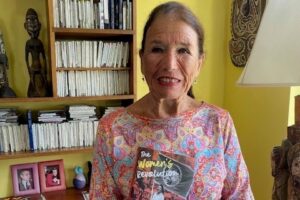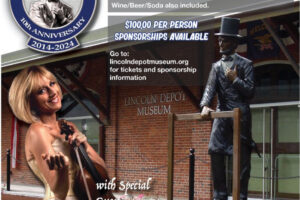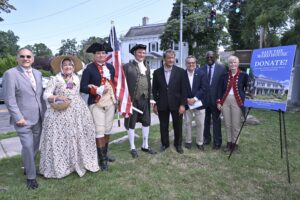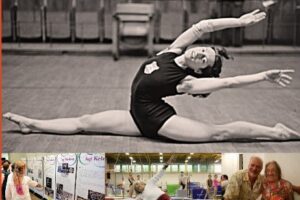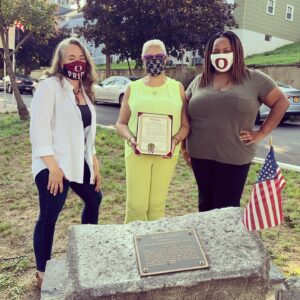
History is personal for Joyce Sharrock Cole, the new Ossining Village Historian. Cole grew up without any sense of her own family’s past. Some of her grandparents had died young, others weren’t talking. But then, when she was 41, a family reunion and a helpful genealogist led to the discovery that her great-grandmother was the product of a plantation owner’s son in South Carolina.
“Up until that point, I didn’t feel a connection. I couldn’t find my place in history. There’s power in knowing who you are, and now I know who I am and who I descend from.”
Piecing together her own genealogy exposed Cole’s deep connection to Ossining, the town in which she grew up and has always lived. She realized one of her mother’s best friends was the great-granddaughter of the Reverend Henry Edward Duers, a runaway slave who fought in the Civil War and became a ground-breaking figure in the African-American community, helping many families – including the Sharrocks – to move north during the Great Migration.
Now, taking on a job for which she seems to have been destined, Cole is helping others to make similar connections, and discover their own roots. “I set up an ancestry group to help people regain their histories. So many folk have so little information about their families. One man, now in his seventies, knew nothing about his father other than his name. I was able to give him living siblings and discovered his grandfather was a famous clarinetist in the Harlem Renaissance. I put it all together in a book for him that I called The Book of Life. The man cried.”
Cole was lucky enough to have been taught by Carl Oechsner, the beloved history teacher at Anne M. Dorner Middle School, whose hikes through the area gave his pupils an early appreciation of Ossining’s rich past. Oechsner would walk the children through the town, pointing out the aqueduct, the river, the factories. Local history isn’t taught in schools any more but, says Cole, “My role now is to make the same connections. It’s important for the children to see where they fit in, their communities, their backgrounds.” She has approached the superintendent of schools to see what can be done, either within the curriculum or in an after-school programs.
Few communities are as powerfully defined by their histories as Ossining, originally known as Sing Sing, after the Sint Sinck Native Americans who owned the territory. Shedding its connection to the disreputable prison in 1901, Ossining has been a vibrant town for centuries, with two historic districts, downtown Ossining and Sparta: a melting pot of immigrants and migrants who contributed their skills and talents to build up the community, commerce and culture.
Cole wants to make room for everyone. The role of village historian is to preserve, present, teach, research, and write the history of the community, and having started the job in July, she’s already deep into the work. Her biggest current project is the Ossining Covid Project, an inspired idea that makes room for all strands of the local population. “We have to preserve our Covid experience, how we got through it, what common life was like.” The community is invited to upload pictures, stories, journal entries of life in quarantine, and also to donate ephemera from this era which will be kept at the Ossining Historical Society. “People in the future will want to know what we experienced,” Cole says.
She is also keen to document the recent civil unrest. “It has been extraordinary to see black, white, Hispanic, all risking their lives during a pandemic, to march on a constant basis. I want to ask, ‘What makes you do that?’ I want to preserve posters, oral histories, video footage.”
The feedback from Ossining residents to these projects has been enthusiastic. And there will be much more to come. Cole has begun working on the history of the Sint Sinck. She wants to devote space to the Hispanic residents too. “I want them to have a record of their life here.” And she has already made a short video about the remarkable Reverend Duers which can be found on the Ossining Village Historian’s webpage.
“The charm of Ossining stems from its past, its architecture, its authenticity, its old families,” Cole says, whose own family roots reach back some 120 years. “There’s so much material, from so many sources: the prison, the fire department, even the cigarette committee – a group of women who waved off the soldiers during World War II with gifts of cigarettes and cookies.”
Cole is excited by all of it, and her enthusiasm is infectious. “I want to bring joy to my community through history,” she says. And it seems extremely likely that she will.
You can visit the Ossining Historian’s page at www.villageofossining.org/village-historian.
You can view a video about Reverend Henry Duers at www.youtube.com/watch?feature=youtu.be&v=uPH4j-P6LBw&app=desktop.



